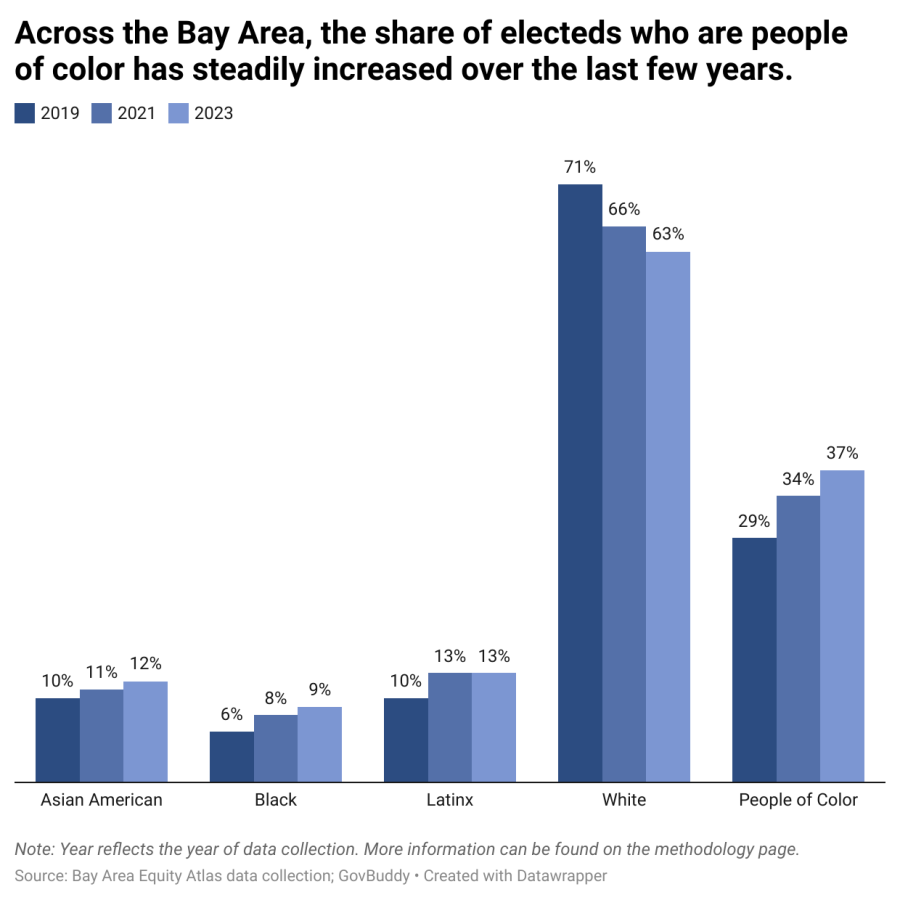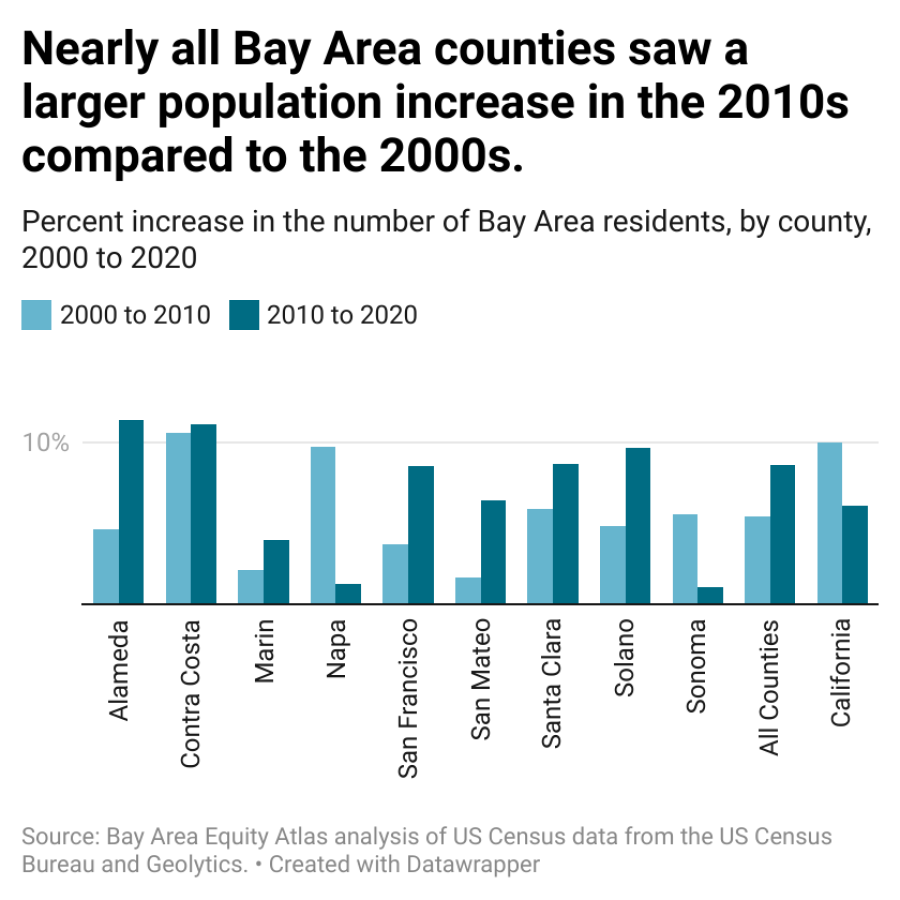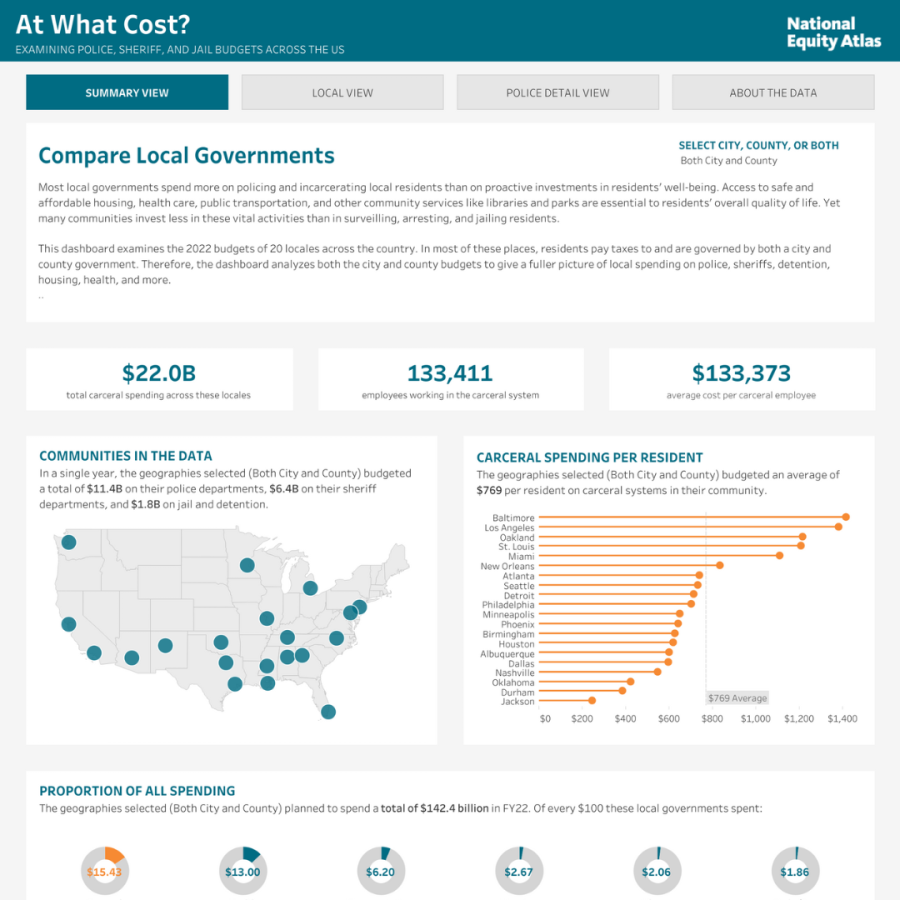Despite Recent Progress, Elected Officials Still Don’t Reflect the Bay Area’s Diversity
Dear Atlas users,
As recent weeks have shown, the Bay Area’s struggle to recover from the Covid-19 crisis is far from over. The Bay Area Equity Atlas and our community partners are equipping equity advocates with data and research to support an equitable recovery and build back a more just economy. Here are some updates:
New Analysis Finds that People of Color Remain Underrepresented in Elected Positions
Centering the experiences of the people most impacted by structural racism is an essential component of equitable policymaking. The Bay Area Equity Atlas team and Bay Rising are excited to share our latest analysis on the diversity of elected officials in the region, which shows that the region has seen steady growth in electeds of color, but people of color remain highly underrepresented. For the first time, we also examined how the switch to district-based elections may increase the diversity of candidate pools. Other strategies like campaign finance reform, leadership development programs, and expanded voter education and voting options can also foster a fairer and more inclusive Bay Area. You can find the analysis here.
You’re Invited to "Rep the Bay": A Conversation on Diversity in Bay Area Politics
Join us on September 9 at 11am PT / 2 pm ET for a webinar to learn more about this research and hear local leaders discuss strategies to build political power among communities of color in the region. Speakers include Shanthi Gonzales (Oakland Unified School District), Kimi Lee (Bay Rising), Ellen Wu (Urban Habitat), and Michelle Huang (Bay Area Equity Atlas). Register for the webinar here.
New Homeownership Indicator: White Households Are 28 Percent More Likely than Households of Color to Own Their Homes
Homeownership remains one of the most widely available and effective ways to increase wealth over generations — yet Bay Area residents of color remain far less likely to own a home than their White counterparts. We added the Homeownership indicator to the Atlas to better understand inequities in ownership by race, nativity, ancestry, geography, and gender, and how homeownership rates are changing over time.
Updated Data Now Available for 14 Indicators
We have also updated the following indicators to reflect the most recent available data: Nativity and ancestry, Educational attainment, Disconnected youth, Median earnings, Income growth, Police use of force, Extreme commuting, Housing burden, Gentrification risk, Diversity of electeds, Voting, Linguistic isolation, Economic gains: eliminate rent burden, and Economic gains: racial equity in income. Stay tuned for more data updates coming soon!
Fact Sheet: Rent Debt in Unincorporated Alameda County
Analyzing rent debt in unincorporated communities in Alameda County. We found that 2,200 renter households—13 percent of renter households— across Ashland, Cherryland, Fairview, Castro Valley, and San Lorenzo are behind on rent and at risk of eviction when the statewide eviction moratorium expires, currently set for September 30. This amounts to an estimated $12 million in rent debt or about $5,500 per household. In addition to eviction protections and debt relief at the state and federal level, local policymakers should protect these renters by passing just cause eviction protections, rent stabilization, proactive rental inspections, and a fair chance ordinance. Find the analysis here.
In the News
Last month, the San Francisco Chronicle cited our data in a story on reparations and jury reform.
Thank you,
Bay Area Equity Atlas team


